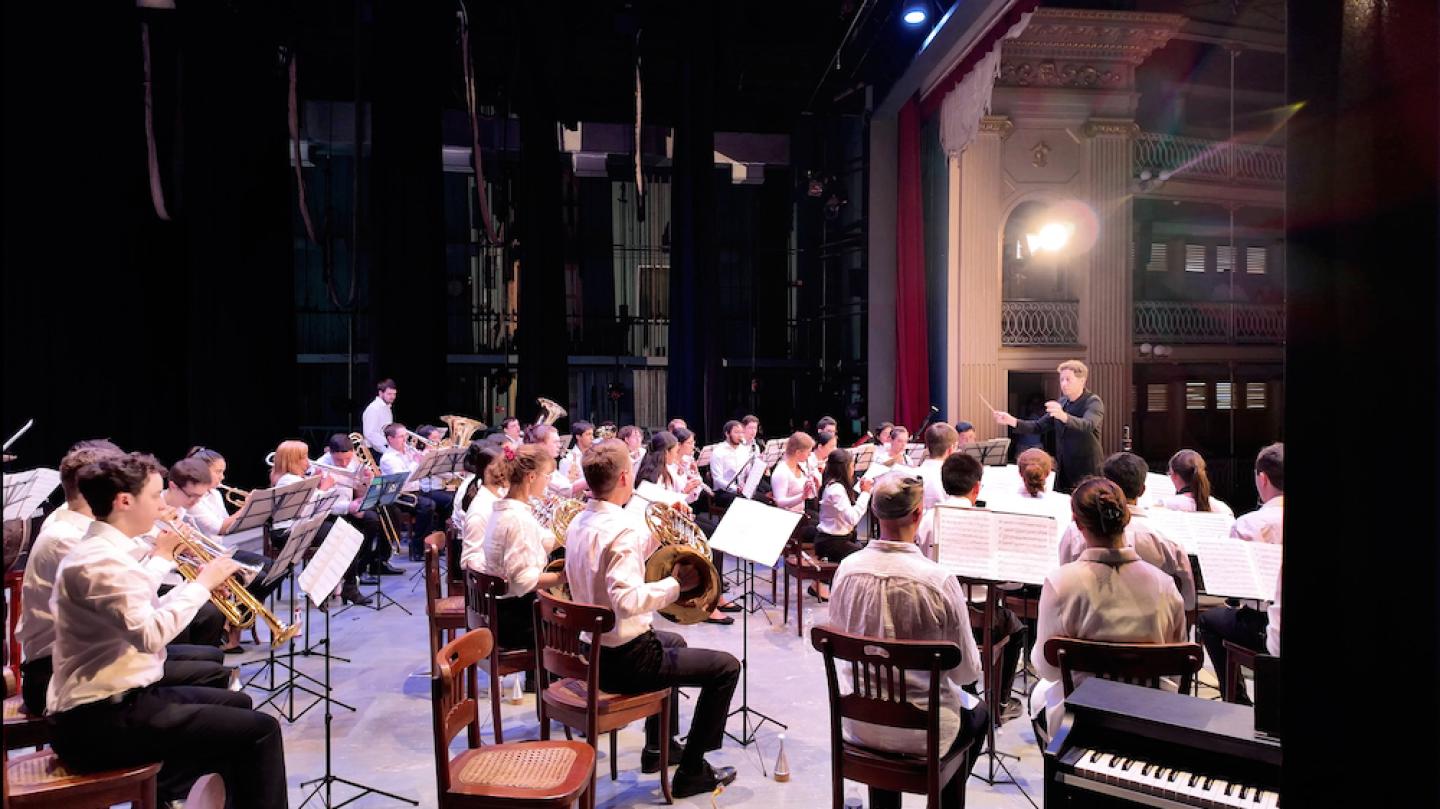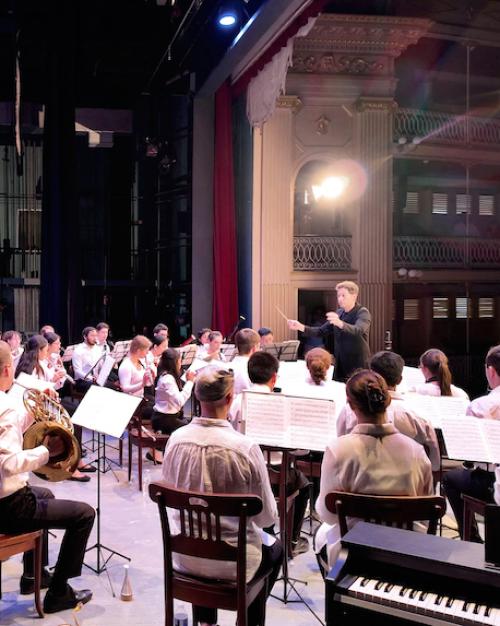Over winter break, students in Cornell’s Barbara & Richard T. Silver ‘50, MD ‘53 Wind Symphony traveled to Cuba for a community-engaged performance tour in collaboration with the National Concert Band of Cuba. The tour honored both music and culture.
The nine-day trip, with eight days spent in Havana and one in Matanzas, was led by James Spinazzola, the Barbara & Richard T. Silver ‘50, MD ‘53 Associate Professor and Director of Winds at Cornell. He hopes to establish a long-term partnership with the National Concert Band, a premier ensemble sponsored by the state, with members ranging from students to older adults.
Spinazzola emphasized the reciprocal nature of the partnership, envisioning a biennial exchange where the Wind Symphony travels to Cuba one year, and in the alternate year, members of the National Concert Band visit Cornell.
The ensemble looks forward to the tour all year, said saxophonist Karen Mendoza ‘25. It pushes them to become better musicians, she said, and the travel experience allows them to use music to build connections and look beyond the political issues between nations.
Cuba offers a unique musical richness deeply rooted in its history and influenced by diverse cultural elements, Spinazzola said. He underscored the significance of studying the country, not only for its socio-political and economic context, but also for its immense contributions to global music, embedded in genres from jazz, salsa and popular music in the U.S. to West African re-adaptations of Cuban music and Spanish “nuevo flamenco.”
The Wind Symphony's repertoire for the tour included pieces by American composers who were inspired by their visits to Cuba, such as George Gershwin and Aaron Copland. And while in Havana, students also learned music from Cuban-born composers such as Gonzalo Roig, who is perhaps principally known for his 1932 operetta “Cecilia Valdés.”
This experience illustrates the full-circle relationship of a cultural exchange and the universality of music, Spinazzola said. Despite speaking different languages, the musicians immediately found common ground.
“Music is a natural vehicle for building community," he said. "Every known culture has organized sounds in a way that could be classified as music …Because its intercultural commonality is so strong, it’s a wonderful way to help people from seemingly disparate backgrounds find connection.”
The students' immersive experience on the tour went beyond their concert performances. They studied the history, performance practice, and dance of the danzón and learned rhythms associated with the Cuban religion Santería and related folkloric music. They explored the intersections of Cuban and American musical traditions and listened to the Grammy-nominated rumba ensemble Los Muñequitos de Matanzas and learned from tour co-producer Ned Sublette, author of “Cuba and Its Music” (Chicago Review Press, 2004).
Although Wind Symphony students were initially apprehensive about going outside their comfort zone, Mendoza said, “You saw people really loosen up …At some point, while we were dancing, we realized no one was judging us. It was about engaging with the music in a way that connected with us as individuals.… Our hosts seemed to genuinely appreciate us wanting to learn about their culture.”
Another highlight was a concert at the historic Teatro Sauto in Matanzas, where much of the furniture and decor remain virtually untouched since the 19th century. The concert brought 300 enthusiastic audience members dressed in their Sunday best, Mendoza said. “We got a standing ovation, and the host gave us flowers. It was really sweet because we weren’t expecting that amount of support and appreciation.”
“If I had one word to explain this tour, it would be unifying,” said Omeed Moini ‘25. "We were able to come together and make music despite any global hardship or tension. Music is a tool to build community, no matter where we’re coming from."
As the symbiotic relationship between Cornell and Cuba grows, this travel opportunity will be open to all Cornell Wind Symphony students. To share more about the impact of cultural exchanges like this one, Spinazzola has written “Community-Engaged Performance Tours: A Guide for Music Ensemble Directors and Educators,” a book that highlights the impact of cultural exchange and the warmth of solidarity that transcends language and politics.
Click here to view a video about the Wind Symphony's Cuban tour.
Hannah Mitchell is a communications assistant for The College of Arts & Sciences





